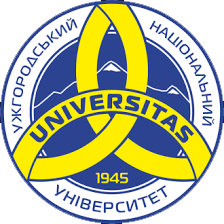DYNAMIC MEDITATION IN ACADEMIC ROWING
DOI:
https://doi.org/10.32782/psy-visnyk/2025.1.13Keywords:
athletes, rowing, neurotic reactions, dynamic meditationAbstract
The population of Ukraine is experiencing a strong influence of stress on the psyche, and the number of neuroses has increased significantly. Medical institutions are unable to cope with the flow of people in need of psychotherapeutic assistance, and the initial forms of neurosis are turning into chronic pathologies. In this regard, there was a need to create a method that provides protection against nervous system disruptions and treatment of neurotic reactions. For many athletes, the word ‘meditation’ has a mysterious character and is associated with supernatural forces, which is due to a lack of understanding of the nature of the human psychophysiological state. This paper shows the possibility of using dynamic meditation in sports to treat athletes with neurotic reactions. To obtain a therapeutic effect, the principle of intensive breathing and physical activity in a competitive mode with concentration on a psychotraumatic situation was used The results obtained showed that this method of treating neurotic reactions is convenient for rowers, as it does not disrupt their usual training on the concept and on the water. The proposed method can be used independently for preventive and therapeutic purposes. A distance of 2000 m for 10-12 minutes is enough to have a therapeutic effect in the case of neurotic reactions. Athletes can enter the state of dynamic meditation with the treatment of neurosis (ICD 10: F40-F48) if they focus on the cause of their disease. Immersion in the state of dynamic meditation occurs on the basis of psychophysiological mechanisms inherent in humans. During treatment, it is necessary to focus on internal sensations, which will lead to dynamic meditation with distraction from external stimuli. This practice will develop the athlete’s sensory abilities, increase muscle activity, enhance concentration, increase mental activity by stimulating brain neurons, and improve organ circulation.
References
Conconi, Francesco; M. Ferrare; P.G. Ziglio; Droghetti, P; Codeca, L. (1982) Determination of the anaerobic threshold by a non-invasive field test in runners (англ.) // Journal of Applied Physiology : journal. Vol. 52, No. 4. P. 869–873. PMID 7085420.
Verigo B. F. (1892) Zur Frage über die Wirkung des Sauerstoff auf die Kohlensäureausscheidung in den Lungen // Archiv für die gesammte Physiologie des Menschen und der Thiere. No. 51. P. 321–361.
Chr. Bohr, K. Hasselbalch, and August Krogh (1904) Concerning a Biologically Important Relationship – The Influence of the Carbon Dioxide Content of Blood on its Oxygen Binding // Skand. Arch. Physiol. No. 16. P. 401–412.
Joseph P. Rhinewine and Oliver J. Williams (1995) Holotropic Breathwork: The Potential Role of a Prolonged, Voluntary Hyperventilation Procedure as an Adjunct to Psychotherapy // The Journal of Alternative and Jones, Andrew M.; Jonathan H. Doust. Lack of reliability in Conconi’s heart rate deflection point (англ.) // International Journal of Sports Medicine : journal. Vol. 16, No. 8. P. 541–544. doi:10.1055/s-2007-973051. PMID 8776209.
Kleshnev V. (1986) Power in Rowing. in: International Research in Sports Biomechanics. Sanderson B., Martindale W. Towards optimizing rowing technique. Medicine and science in sports and exercise, No. 18. Р. 454-468.
Osho (2004) Meditation: the first and last freedom, St. Martin’s Griffin, ISBN 9780312336639, P. 35.






